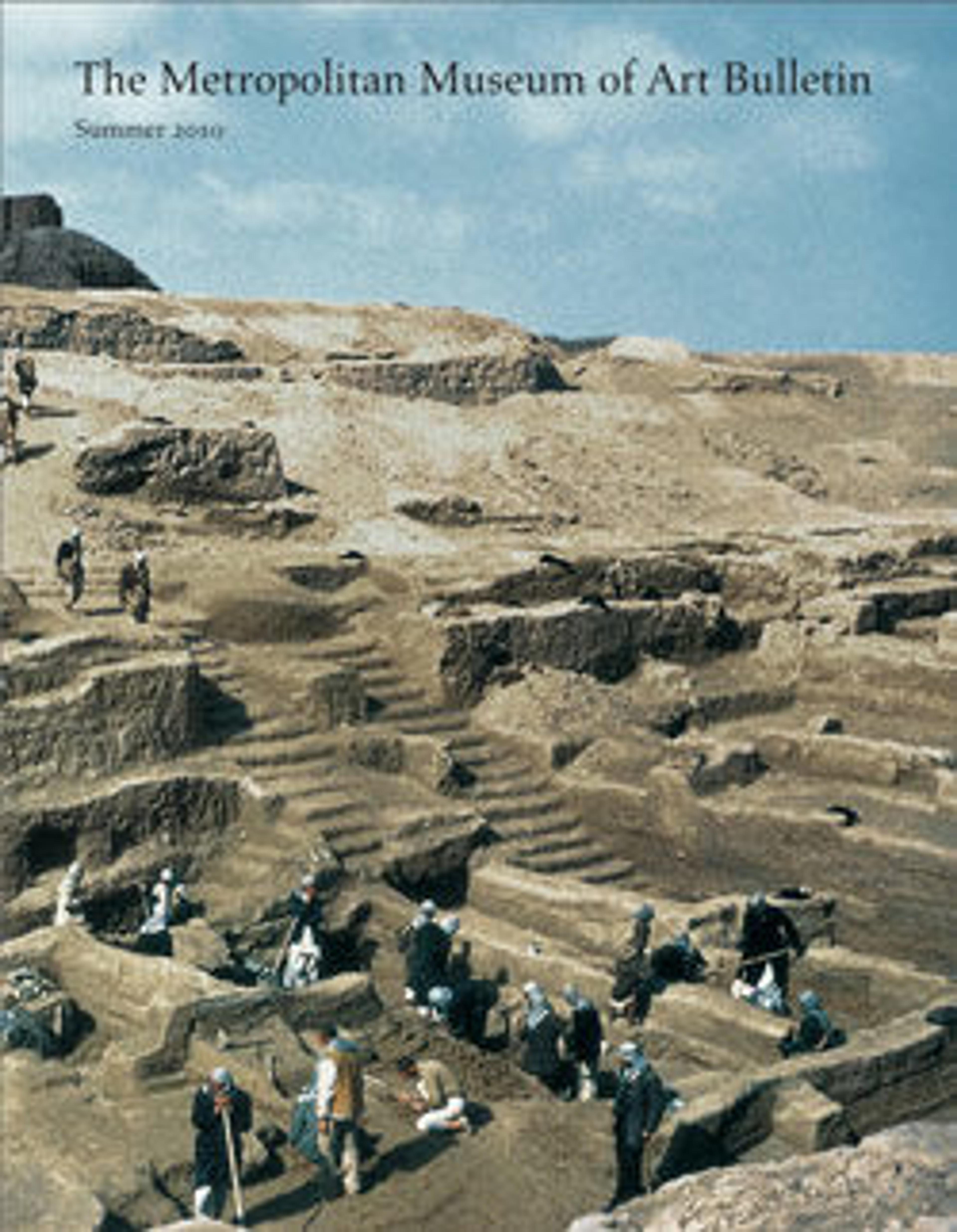Spouted jar
This pitcher has a squat body with a rounded shoulder, a short neck, and a flaring rim. A long spout emerges from one side of the body just below the shoulder and connects to the rim before jutting out horizontally. A flat handle connects the shoulder and the rim on the other side. The pitcher is buff, with painted reddish-brown decorations, including checkerboard patterns on the body, dots on the rim, and crosshatching, zigzags and rays on the spout and handle. The combination of the long spout and painted decorations suggest the form of a bird. The body and neck were made separately on a wheel, with the handle and spout added later.
This pitcher was excavated at Tepe Sialk, near Kashan in central Iran. Sialk was the site of a fortified town, constructed in the early first millennium B.C. Several hundred yards from the town there was a large cemetery, called Necropolis B by the archaeologists who explored it between 1933 and 1937. The graves were pits covered with pitched roofs made of stone or clay, and in addition to the bodies of the dead they contained jewelry, weapons, leather armor, horse trappings and ceramic vessels, including many similar pitchers. Presumably this pitcher was used to pour a liquid containing dregs, such as wine, since the round body and long spout would prevent the dregs from ending up in the cup. Possibly it was used in a funerary banquet or ritual before it was placed in the grave; regardless, its burial in the cemetery shows that drinking wine was an important part of life and death in Iron Age Sialk.
This pitcher was excavated at Tepe Sialk, near Kashan in central Iran. Sialk was the site of a fortified town, constructed in the early first millennium B.C. Several hundred yards from the town there was a large cemetery, called Necropolis B by the archaeologists who explored it between 1933 and 1937. The graves were pits covered with pitched roofs made of stone or clay, and in addition to the bodies of the dead they contained jewelry, weapons, leather armor, horse trappings and ceramic vessels, including many similar pitchers. Presumably this pitcher was used to pour a liquid containing dregs, such as wine, since the round body and long spout would prevent the dregs from ending up in the cup. Possibly it was used in a funerary banquet or ritual before it was placed in the grave; regardless, its burial in the cemetery shows that drinking wine was an important part of life and death in Iron Age Sialk.
Artwork Details
- Title:Spouted jar
- Period:Iron Age II-III
- Date:ca. 9th–7th century BCE
- Geography:Iran, Tepe Sialk
- Culture:Iran
- Medium:Ceramic, paint
- Dimensions:7 9/16 × 11 5/8 × 7 5/16 in. (19.2 × 29.5 × 18.5 cm)
- Credit Line:Gift of Museum of Tehran, 1939
- Object Number:39.60.9
- Curatorial Department: Ancient West Asian Art
More Artwork
Research Resources
The Met provides unparalleled resources for research and welcomes an international community of students and scholars. The Met's Open Access API is where creators and researchers can connect to the The Met collection. Open Access data and public domain images are available for unrestricted commercial and noncommercial use without permission or fee.
To request images under copyright and other restrictions, please use this Image Request form.
Feedback
We continue to research and examine historical and cultural context for objects in The Met collection. If you have comments or questions about this object record, please contact us using the form below. The Museum looks forward to receiving your comments.
